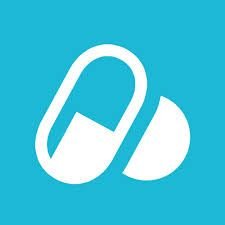
All iLive content is medically reviewed or fact checked to ensure as much factual accuracy as possible.
We have strict sourcing guidelines and only link to reputable media sites, academic research institutions and, whenever possible, medically peer reviewed studies. Note that the numbers in parentheses ([1], [2], etc.) are clickable links to these studies.
If you feel that any of our content is inaccurate, out-of-date, or otherwise questionable, please select it and press Ctrl + Enter.
M-cam
Medical expert of the article
Last reviewed: 03.07.2025

ATC classification
Active ingredients
Pharmacological group
Pharmachologic effect
Indications M-cam
Indications for the use of M-cam include painful pathologies and joint inflammations:
- arthritis,
- rheumatoid arthritis,
- osteoarthritis,
- polyarthritis,
- arthrosis,
- osteoarthritis,
- ankylosing spondylitis (Bechterew's disease),
- as well as pain caused by injuries.
 [ 3 ]
[ 3 ]
Release form
The release form of this medicine is tablets for oral administration in dosages of 7.5 and 15 mg.
 [ 4 ]
[ 4 ]
Pharmacodynamics
The pharmacodynamics of M-cam are no different from the mechanism of action of most non-steroidal anti-inflammatory drugs. The therapeutic effect consists of selective inhibition of the cyclooxygenase enzyme (COX), which participates in the formation of prostaglandins - mediators of the inflammatory reaction. It is the accumulation of excess prostaglandins that causes local symptoms of inflammatory processes.
The active substance of this drug (4-hydroxy-2-methyl-N-(5-methyl-2-thiazolyl)-2H-1,2-benzothiazine-3-carboxamide 1,1-dioxide or meloxicam) helps to reduce the activity of oxidation and other biochemical reactions in cells affected by inflammation. As a result, the permeability of cell membranes decreases, which prevents the spread of the pathological process. In parallel, there is a significant slowdown in the release of histamine and serotonin, which play an important role in the development of any inflammatory processes in the body.
In addition, meloxicam in M-caps inhibits platelet aggregation, which prevents blood clotting in capillaries and deterioration of microcirculation in the area of inflammation.
 [ 5 ]
[ 5 ]
Pharmacokinetics
M-kam, getting into the stomach, is well absorbed into the blood from the gastrointestinal tract. The maximum concentration in the blood plasma is achieved after 5-6 hours, the degree of bioavailability of M-kam is 89%.
99.4% of the active substance binds to blood plasma albumin. The drug penetrates the blood-brain barrier and enters the synovial fluid filling the joint cavity, and the content in the synovial fluid is 2.5 times higher than in the blood plasma.
M-cam, like all NSAIDs of the oxicam group, is a long-acting drug. The drug is metabolized in the liver, where it is broken down and metabolites are formed. The breakdown products are excreted from the body by the kidneys and, to a small extent, by the intestines; half of the metabolites are excreted in about 15-20 hours.
Use M-cam during pregnancy
The use of M-cam during pregnancy is considered unacceptable due to the increased risk of teratogenic effects of this drug on the embryo and fetus (the occurrence of defects in the cardiac septum).
Contraindications
The following contraindications for the use of M-cam are noted: hypersensitivity to NSAIDs, intolerance to acetylsalicylic acid (which is expressed in an allergic reaction called the "aspirin triad"), gastric ulcer and duodenal ulcer (in the acute phase), bleeding of any etiology and localization, severe cardiac, renal or hepatic insufficiency, pregnancy, lactation, childhood (under 14 years).
Side effects M-cam
The most common side effects of M-cam are: urticaria, drowsiness, headache, tinnitus, swelling of soft tissues of the extremities, increased blood pressure and heart rate, changes in blood composition (leukopenia or thrombocytopenia), nausea, vomiting, abdominal pain, bowel disorders. Taking M-cam is often accompanied by inflammation of the oral mucosa (stomatitis) or eyes (conjunctivitis), kidney dysfunction (up to nephrotic syndrome and glomerulonephritis) and increased urea content in the urine.
Severe adverse side effects of this drug may include angioedema and anaphylactic shock.
Overdose
Overdose of the drug leads to a significant increase in the manifestation of its side effects. In case of overdose, activated carbon should be taken.
 [ 14 ]
[ 14 ]
Interactions with other drugs
Interactions of M-cam with other drugs include a reduction in the therapeutic effect of drugs for the treatment of arterial hypertension and cardiovascular failure, beta-blockers and ACE inhibitors, as well as blocking the action of diuretics and some antibacterial drugs (fluoroquinolone group).
M-cam should not be prescribed together with anticoagulant drugs, salicylates and other non-steroidal anti-inflammatory drugs.
Shelf life
Manufacturer
Attention!
To simplify the perception of information, this instruction for use of the drug "M-cam" translated and presented in a special form on the basis of the official instructions for medical use of the drug. Before use read the annotation that came directly to medicines.
Description provided for informational purposes and is not a guide to self-healing. The need for this drug, the purpose of the treatment regimen, methods and dose of the drug is determined solely by the attending physician. Self-medication is dangerous for your health.

